Wildfire Expo: Getting Wise Around Fire
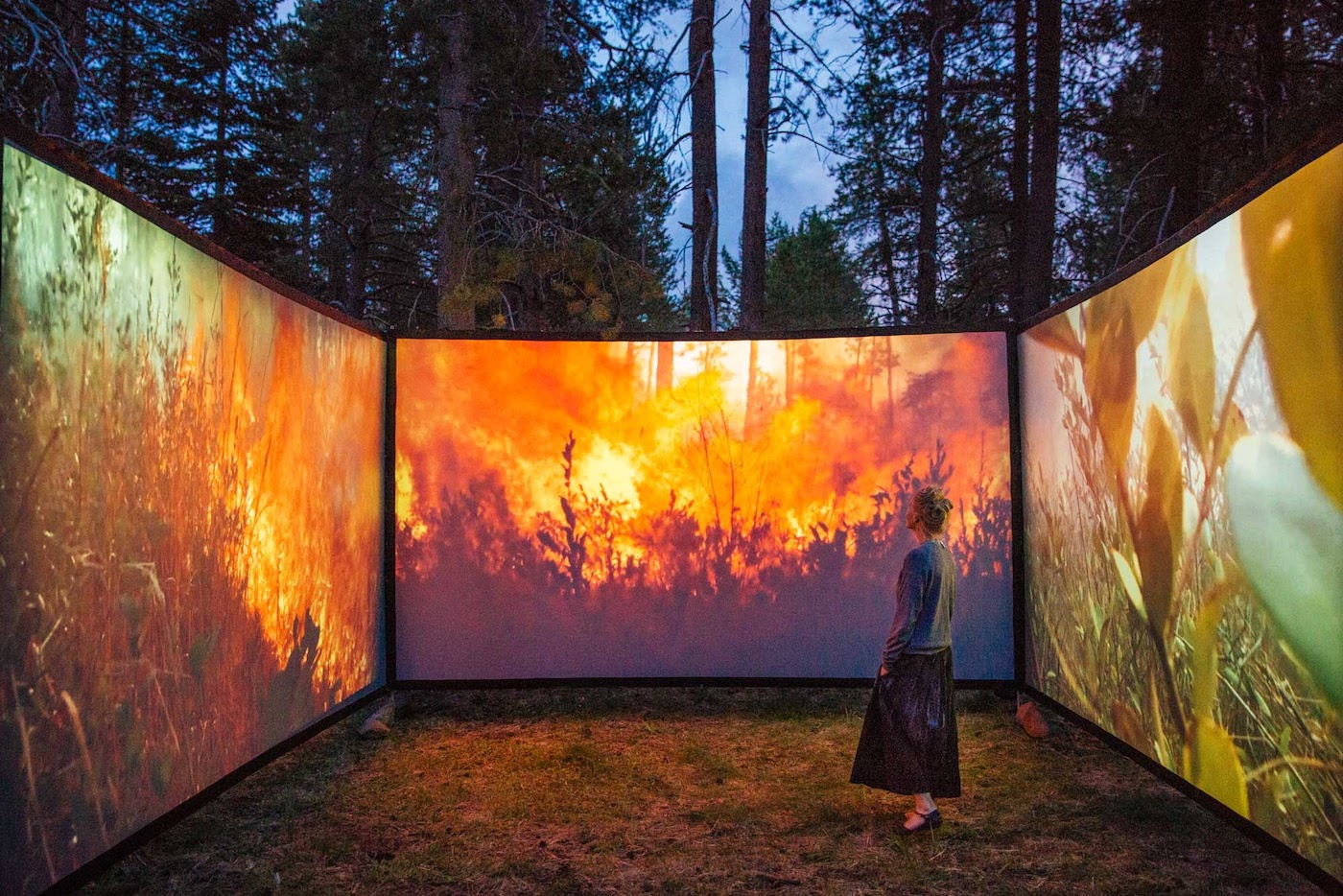
Frankenstein’s monster perhaps said it best: “Fire bad.” This is a capable summation but lacks actionable detail — and here in the celebrated Wildfire State, actionable detail is what it’s all about. Fortunately, the good people of Santa Barbara County’s Firesafe Council are hosting a three-day event that promises not just to fill the gaps in our understanding of wildfire, but to engagingly school us in preparedness.
The council’s 2022 Wildfire Preparedness Exposition takes place May 6-8 at the Direct Relief property in Goleta — 6100 Wallace Becknell Road. The expo’s opening reception takes place on Friday, May 6 from 5-8:30 pm. On Saturday and Sunday (May 7 and 8), the expo will be in full swing from 11am to 6 pm. This attention-getting event aims to entrance, educate, and elevate. Civic gatherings that bring us together around critically important topics can be well-intentioned but uninspiring. The 2022 Wildfire Preparedness Exposition is aiming for something different. Nic Elmquist — FireSafe Council Member, Wildland Fire Specialist for the Montecito Fire Department, and former Arroyo Grande Hotshot — explains all.
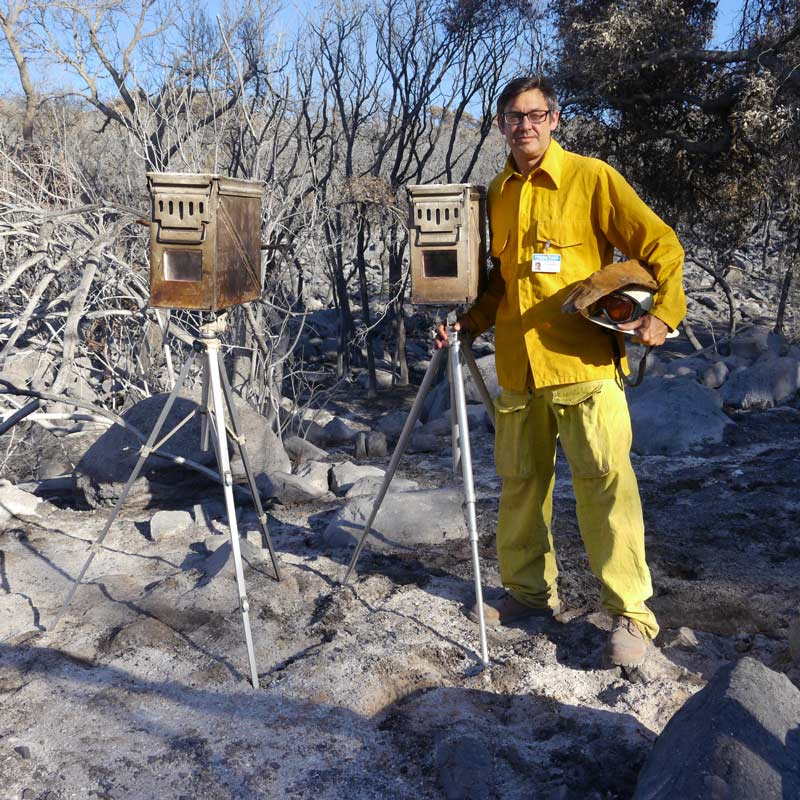
“This Preparedness Expo is essentially community outreach to garner interest — and educate the community in — the regional wildfire mitigation plan,” Elmquist says. “It’s also to inform them about Firewise, and opportunities to work with the FireSafe Council.” Pause. “Look, we know that asking people to come together over ‘principles of wildfire preparedness’ may not sound that exciting, so this expo is designed to really enliven and bring the subject home.”
Solemn lectures rarely draw enthusiastic crowds. Elmquist and his colleagues on the FireSafe Council have pointedly avoided the solemn lecture model in favor of one that piques public curiosity and delivers life-saving information with panache. For instance, the three-day agenda includes an immersive experience that puts you in the middle of a raging wildfire — virtually, of course. The 2022 Wildfire Preparedness Exposition is designed to capture the imagination. The degree to which we “civilians” are a part of the solution can’t be overstated.
Elmquist explains that in pre-European settlement Northern California, lightning strikes reliably set natural ecosystem-benefitting fires “…every three to ten years, at the outside. So, there was a natural fuel reduction. Here in the south of the state there would be the very occasional rogue lighting strike, but not often enough to remedy the buildup of fuels. Pre-settlement, the burning in this part of the state mostly happened at the hands of the Native Americans, who used controlled burns to clear brush away from their settlements, both for the safety of the community, and so they could better spot approaching enemies. There are historical documents that show they would have oak fires twice a year in order to harvest acorns.”
Pre-modern cultures are often found to have successfully invented a wheel we modernists struggle to replicate. Fire control is no exception. Information-bedazzled 2022 comes with its own challenges, namely capturing the public’s attention. Elmquist and the Fire Council understand the need to engage a contemporary audience for whom these massive fires can seem abstract concerns. Until the next one shows up.
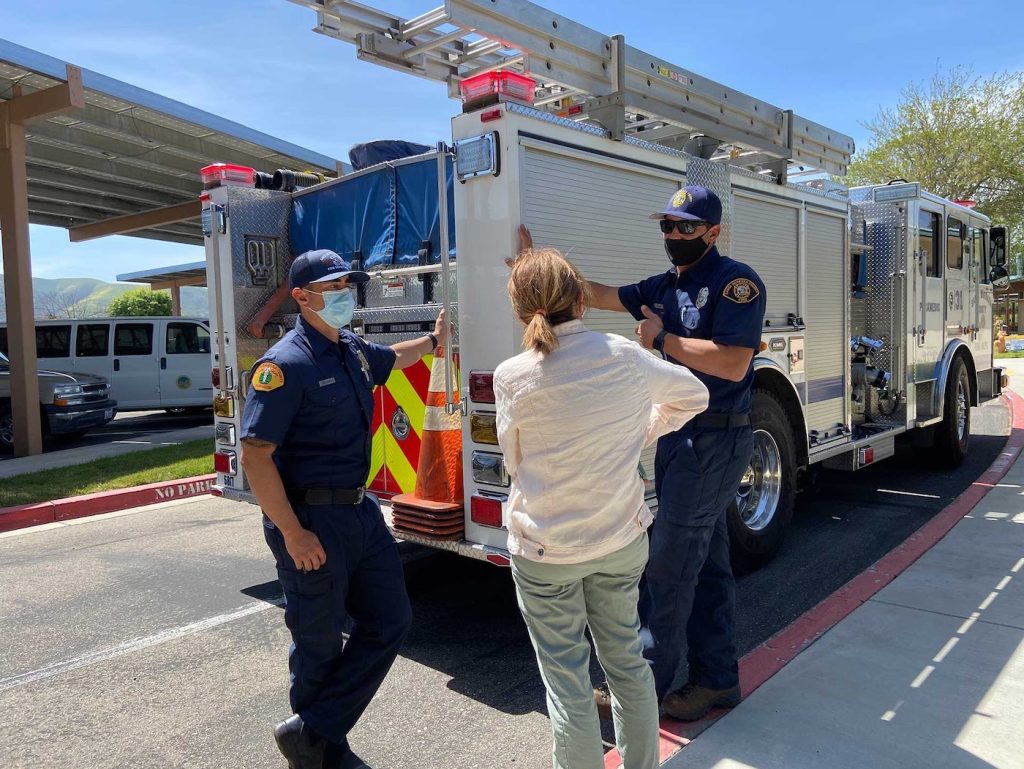
“The majority of our local residents understand the threat of wildfires, of course. But oftentimes the FireSafe Council and Firewise — these various regional plans and programs for wildfire mitigation — these aren’t really known. So this is a good opportunity for the community to come out and see what resources exist for them. We’re moving towards a climate that’s going to sustain more wildfires rather than fewer. So it’s in everybody’s best interest to be educated, to see where they fit in to the solution.”
Interestingly, the so-called Wildland Urban Interface (or “WUI” as fire insiders call it) is where a wildfire’s destructive force can be brought to its knees.
“When these fires move out of the wildland areas into the urban interface, there isn’t that woodland vegetation,” Elmquist says. “So essentially, if the structures are hardened (fire resistant) — especially at that interface between the wildland vegetation and the community, there’s very little for the fire to burn once you take the structures out of the mix. Then you’re not going to have this very high-intensity fire front moving through the community, because you’re limiting the amount of fuel available. When you harden your structure you’re protecting your home — but also protecting your community by taking your house out of the fuel category.”
When all this starts to seem like an exercise, helping people to feel a little “fire empathy” can go a long way.
“One of the Expo’s biggest features will be an installation by local filmmaker Ethan Turpin, who has this really cool experience called Walk into Wildfire. Using burn box cameras developed by the U.S. Forest Service, he catches footage of a fire front as it passes through the landscape.”
Not to appear journalistically indisciplined, but “burn box cameras”? Let’s pivot briefly. Filmmaker, Sensory Phenomena artist, and Hybrid Media experimenter Ethan Turpin has the red-hot details. “I’ve never melted a camera — knock on wood — but the forest service filmmaker who trained me in this, and some of whose work appears in these collaborations, he’s shown me pictures of melted cameras.”
A photo of Turpin standing next to a couple of these unfortunate burn boxes — roasted-looking metal containers whose fire-resistant windows look like mouths crying out in alarm — speaks volumes. Imagining the hellfire that has bathed these objects is an unwanted exercise in anthropomorphism. “The previous burn box versions were basically ammo boxes,” says Turpin, whose press and fire line credentials put him near enough to the action to yield moving images. “The upgrade is a heavy-duty steel box with kiln insulation, and then there’s two panes of oven glass providing the window for the camera to see through.” How does a guy get into frontline fire photography?
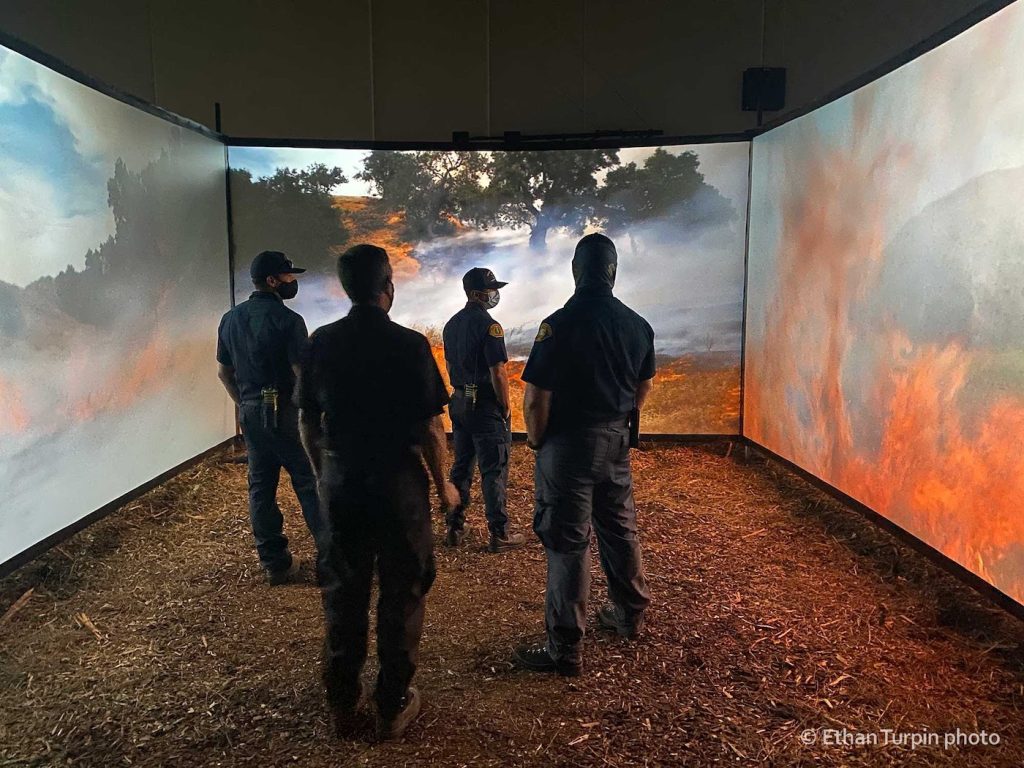

“My dad was a firefighter. He worked for Santa Barbara County Fire. I grew up in that culture a bit so I had a certain comfort level.” Turpin’s ad hoc filming of 2008’s destructive Tea Fire — whose sundowner wind-fueled flames consumed 210 homes in the area — spurred in him a desire to bring his filmmaking skills to a new purpose. “It was impulsive and spur of the moment, but I immediately felt a connection with wanting to observe and share and contemplate.” He has since worked with UCSB’s Bren School, the Kavli Institute for Theoretical Physics (KITP), and others on projects to do with the study of a wildfire’s inner workings.
“The FireSafe Council is very much focused on helping local communities to understand and confront real-world fire risk,” Turpin says, “and encouraging certain neighborhoods that have been identified as high risk to get involved with the Firewise USA program.” What exactly is the FireSafe Council? Nic Elmquist again.
“Two years ago, there was a grant received from the National Fish and Wildlife Foundation to implement a regional wildfire mitigation plan,” he says. “This was an idea originated by UCSB Professor Max Moritz at the Bren School, who’s also on the FireSafe Council board.”
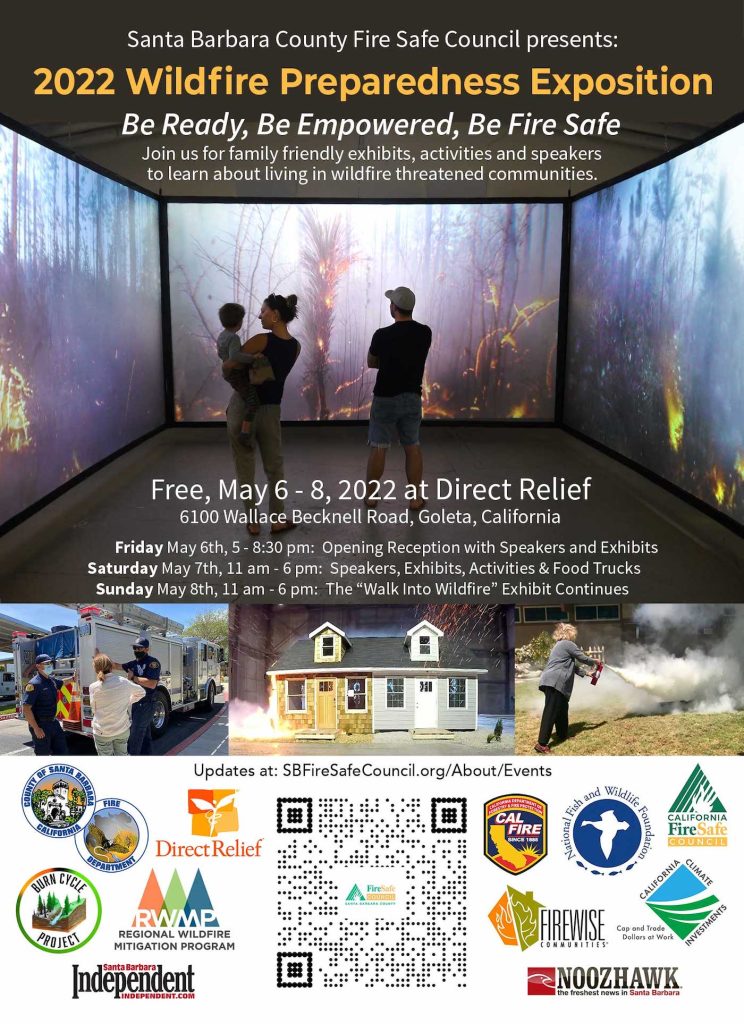
The mitigation plan is a way to regionally compartmentalize and evaluate the characteristics of three inter-related “domains”: the built environment, the landscape, and the community environment. “The FireSafe Council is responsible for the community domain portion,” Elmquist explains, “and our community domain lead is Anna Marie Parkinson. Her main role is to use the NFPA (National Fire Prevention Association) FireWise Community certification to help communities get organized, and certified.”
Certified? Are these nice fire people trying to trick us into going back to school? No. Well, sort of.
The National Fire Protection Association’s Firewise USA® is an evolving program for organizing and empowering neighbors in defined geographic areas. Organize over what? Fire wisdom. Firewise USA is the ongoing localized effort to “increase the ignition resistance of their homes and community, and to reduce wildfire risks at the local level,” as their website says. If there is a more heartache-mitigating phrase than “ignition resistance,” let me know. At this writing there are 1,000 Firewise communities in 40 states.
As a community actively bolsters its own knowledge of wildfire preparedness and mitigation — absorbing and then holistically adopting prescribed mitigation measures in their neighborhoods — they are recognized as “Firewise.” Hence this weekend’s 2022 Wildfire Preparedness Exposition, a terrific example of what they used to call “people power” — the enormous positive effect of simply disseminating knowledge to a population eager to enact it. When said dissemination can be done in a sun-drenched setting alive with happy community hubbub — all the better. So is this Expo thing art or science or education? Yes. Nic Elmquist is excited.
“Another local artist, Michael Long, makes these beautiful scale models of homes, and we asked him to make a model for the Expo. It’s a home broken up into two different sides. One is a fire-hardened home and one is a non-hardened home. It’s really neat, and a great demonstration of how to increase the defensibility of your home. It’s been shown that the five feet directly adjacent to a structure is often decisive as to whether or not that structure burns.”
So, yeah — fire bad, as Frankenstein reminds us. Ethan Turpin adds another perspective, one that may explain his interactive invitation to Walk into Wildfire — and more intimately acquaint oneself with the phenomenon.
“The process of a wildfire is dramatic and can be tragic. But then there’s also the way that it naturally influences and nurtures the landscape. I want people to understand that this is not just meant to be a scary shock-and-awe experience. Fire is also the story of regeneration.” So, maybe, fire bad – and good – at times. Perhaps Frankenstein’s monster just needed to attend the Wildfire Preparedness Exposition. Fortunately, you can – bring the villagers but leave the torches – they are not considered FireSafe.
2022 Wildfire Preparedness Exposition
May 6, 5 – 8:30 pm; May 7 and 8;
11 am – 6 pm
Direct Relief (6100 Wallace Becknell Road), Goleta
sbfiresafecouncil.org
SLO County FireSafe Council will be hosting their own community workshop on Saturday, May 7 from 10 am – 1 PM at Veterans Hall (1000 Main Street) in Cambria. Visit FSCSlo.org to learn more.
Jeff Wing is a journalist, raconteur, autodidact, and polysyllable enthusiast. A long-time resident of SB, he takes great delight in chronicling the lesser known facets of this gaudy jewel by the sea. Jeff can be reached at jeffwingg@gmail.com.





